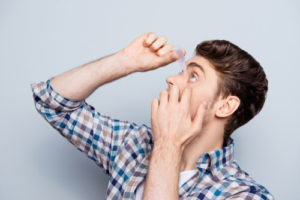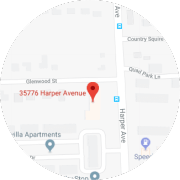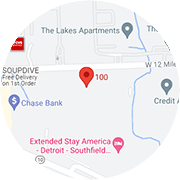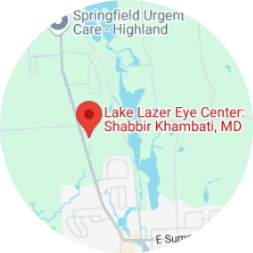 The name “dry eye” can be a little confusing since one of the most common symptoms is excessive watering! It makes more sense, though, when you learn that the eye makes two different types of tears.
The name “dry eye” can be a little confusing since one of the most common symptoms is excessive watering! It makes more sense, though, when you learn that the eye makes two different types of tears.
The first type, called lubricating tears, is produced slowly and steadily throughout the day. Lubricating tears contain a precise balance of mucous, water, oil, nutrient proteins, and antibodies that nourish and protect the front surface of the eye.
The second type of tear, called a reflex tear, does not have much lubricating value. Reflex tears serve as a kind of emergency response to flood the eye when it is suddenly irritated or injured. Reflex tears might occur when you get something in your eye, when you’re cutting onions, when you’re around smoke, or when you accidentally scratch your eye. The reflex tears gush out in such large quantities that the tear drainage system can’t handle them all and they spill out onto your cheek. Still another cause of reflex tearing is irritation of the eye from lack of lubricating tears. If your eye is not producing enough lubricating tears, you have dry eye.
Symptoms of Dry Eye:
- Watery eyes
- The feeling that there’s sand in your eyes
- Eyes that itch and burn
- Vision that becomes blurred after periods of reading, watching TV, or using a computer
- Red, irritated eyes that produce a mucus discharge
Causes of Dry Eye:
- Age: As we get older, glands in the eyelid produce less oil. Oil keeps tears from evaporating off the eye. Decreased oil production allows tears to evaporate too quickly, leaving the eye too dry.
- Diseases including diabetes, Sjogren’s and Parkinson’s
- Hormonal changes, especially after menopause
- Prescription medications: These include some high blood pressure medications, antihistamines, diuretics, antidepressants, anti-anxiety pills, sleeping pills and pain medications. Over-the-counter medications including some cold and allergy products, motion sickness remedies, and sleep aids can also cause dry eye.
- Hot dry or windy conditions: High altitude, air-conditioning, and smoke can also cause dry eye.
- Reading, using a computer or watching TV
- Contact lenses
- Eye surgery: Some types of eye surgery, including LASIK, can aggravate dry eye.
- Inflammation: Recent research suggests that dry eye may be caused by inflammation due to an imbalance of “good” fats and “bad” fats.
Diagnosing Dry Eye
Your eye doctor can check for dry eye by examining your eyes with magnifying instruments, measuring your rate of tear production and checking the amount of time it takes for tears to evaporate between blinks. The doctor can also check for pinpoint scratches on the front surface of the eye caused by dryness using special, colored eyedrops call fluorescein or Rose Bengal. TearLab is the single most accurate and objective test for diagnosing dry eye disease. TearLab generates an osmolarity number, which provides significant information to your doctor.
Treatments for Dry Eye
The most common treatment is the use of artificial teardrops that help make up for the lack of natural lubricating tears. Artificial tear products come in liquid form, longer lasting gel form and long-lasting ointment form, which is most often recommended for nighttime use. Many different brands of artificial tears are available over-the-counter. Some contain preservatives and some do not. Unpreserved tears may be recommended for people whose eyes are sensitive to preservatives. Artificial tears can generally be used as often as needed, from a few times per day to every few minutes. You should follow the regimen your doctor recommends.
When infection, inflammation of the eyelids or clogged oil glands contribute to dry eye, special lid cleaning techniques or antibiotics may be recommended. It may also help to avoid hot, dry or windy environments or to humidify the air in your home or office. Restasis is an exciting new treatment for Dry Eye Disease.
Restasis drops help the eyes produce more tears by reducing inflammation, which is often a cause of dry eye. Unlike artificial tears, Restasis is the first drug proven to effectively treat a cause of Dry Eye Disease rather than only temporarily alleviate symptoms.
A common cause of dry eye is something technically called Meibomian Gland Dysfunction, or MGD. The Meibomian Gland produces vital oil that aids in keeping your eye appropriately moist. When the gland becomes clogged, less oil is produced and can result in chronic dry eye. TearCare LipiTherapy is a new treatment for relieving dry eye caused by Meibomian Gland Dysfunction or clogged Meibomian glands. TearCare is a thermal, open-eye process for comprehensively treating clogged oil glands of a person with chronic dry eye.
Additional dry eye treatment modalities include:
- Punctal occlusion, a medical treatment for dry eye that may enable your eyes to make better and longer use of the few lubricating tears they do produce.
- AmbioDisk™, a 4th generation amniotic membrane (AM) technology created by IOP Ophthalmics. It is a sutureless, overlay AM disk for the office-based or surgical treatment of the ocular surface.

 586-792-3891
586-792-3891 



